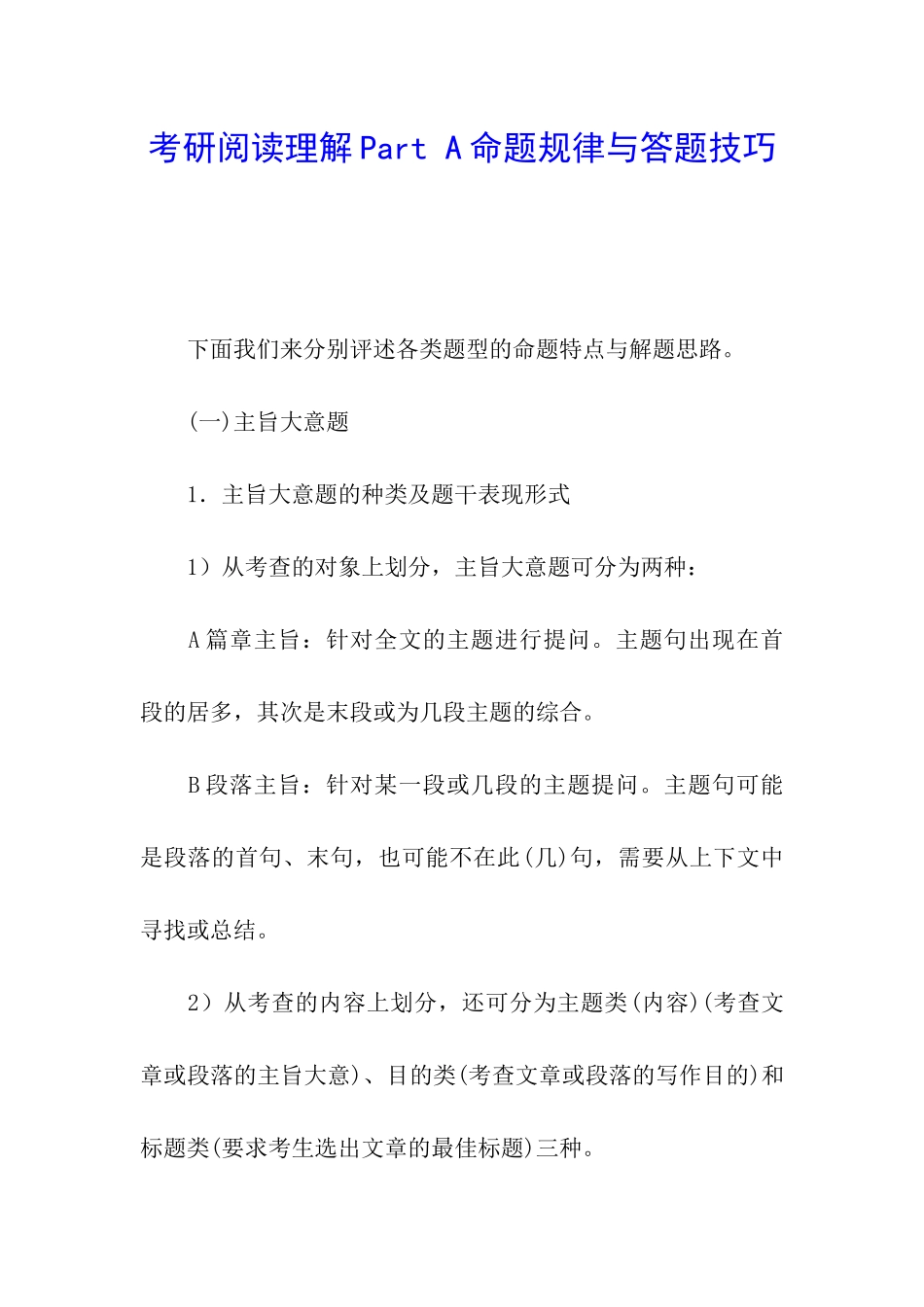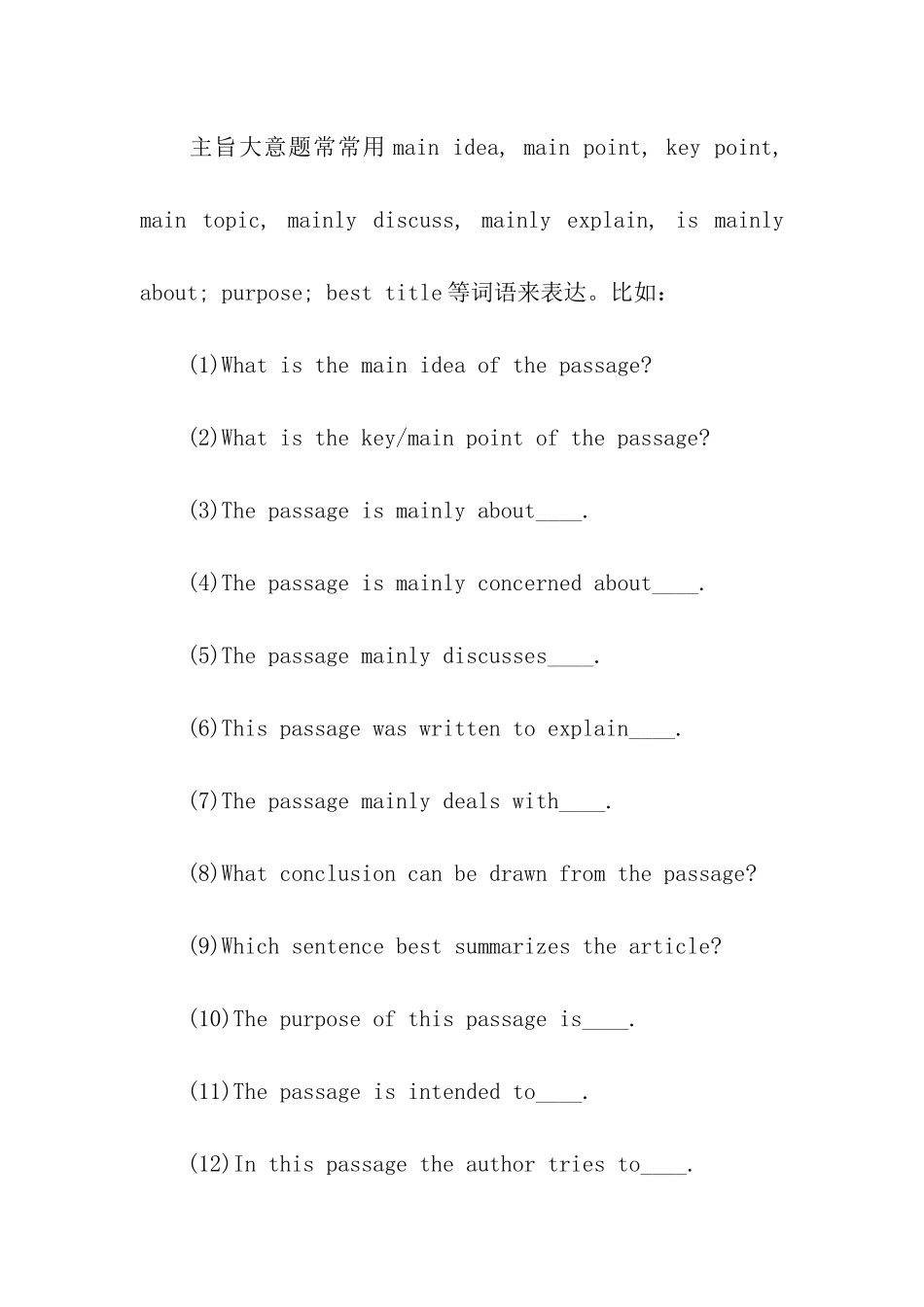考研阅读理解 Part A 命题规律与答题技巧 下面我们来分别评述各类题型的命题特点与解题思路。 (一)主旨大意题 1.主旨大意题的种类及题干表现形式 1)从考查的对象上划分,主旨大意题可分为两种: A 篇章主旨:针对全文的主题进行提问。主题句出现在首段的居多,其次是末段或为几段主题的综合。 B 段落主旨:针对某一段或几段的主题提问。主题句可能是段落的首句、末句,也可能不在此(几)句,需要从上下文中寻找或总结。 2)从考查的内容上划分,还可分为主题类(内容)(考查文章或段落的主旨大意)、目的类(考查文章或段落的写作目的)和标题类(要求考生选出文章的最佳标题)三种。 主旨大意题常常用 main idea, main point, key point, main topic, mainly discuss, mainly explain, is mainly about; purpose; best title 等词语来表达。比如: (1)What is the main idea of the passage? (2)What is the key/main point of the passage? (3)The passage is mainly about____. (4)The passage is mainly concerned about____. (5)The passage mainly discusses____. (6)This passage was written to explain____. (7)The passage mainly deals with____. (8)What conclusion can be drawn from the passage? (9)Which sentence best summarizes the article? (10)The purpose of this passage is____. (11)The passage is intended to____. (12)In this passage the author tries to____. (13)Which of the following could be the best title for the passage? (14)The best title for the text may be ____. 2.主旨大意题的命题规律 1)段首、段尾句常考:段首、段尾句一般表达了文章的中心思想,或者就是该段的主题句,对全文或全段起着提纲挈领的作用。 2)语义转折处常考:尤其是段首的语义转折,其后面往往是作者真实的写作目的或基本观点,即文章的中心思想所在。 3)因果句常考:因果句通常可以表现出作者的意图、观点甚至全文的主题,因此成为考点。 3.主旨大意题干扰项与正确选项的特点 1)干扰项特点: A 局部信息:涉及文章的某一细节,犯了以偏概全的错误。 B 涉及某一自然段的大意,而非整篇文章的中心思想,犯了归纳不够的错误。 C 选项概括范围太宽,其内容超出文章阐述的部分,犯了...


